It wasn’t a bear. It was a prehistoric monster with a snout full of nightmares.
The giant short-faced bear didn’t just walk North America—it dominated it. Taller than a grizzly. Faster than you’d expect. Stronger than anything you’d want to meet in the wild. This wasn’t your average forest-dweller sniffing around for berries.
It hunted horses. It may have chased saber-toothed cats off their kills. And when it stood up? It towered over grown men like a living tank.
This beast roamed a land filled with megafauna, and still managed to be the boss. Think you’re brave? Wait until you meet the terrifying king of the Ice Age—and learn the wildest truths about its reign.
The Apex Predator
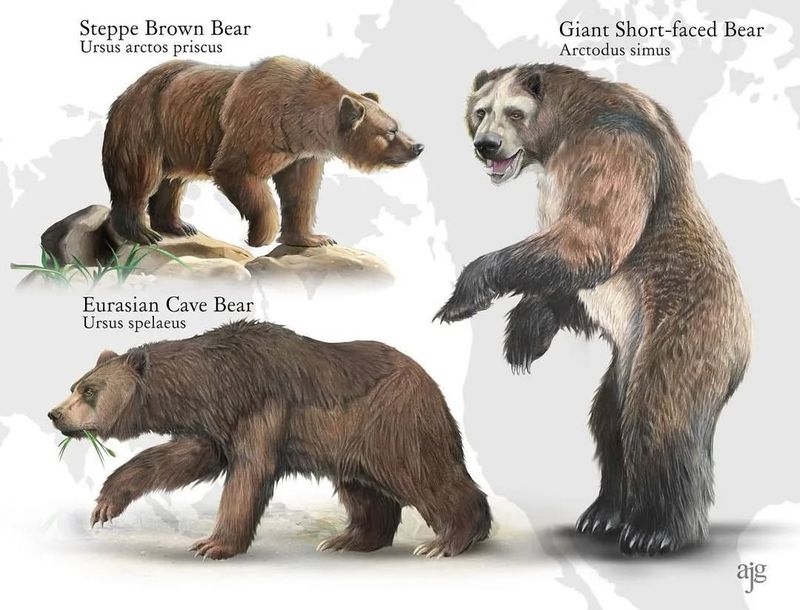
Imagine a world where the Giant Short-Faced Bear was the undisputed ruler of its habitat. Weighing up to 2,500 pounds and standing over 11 feet tall on its hind legs, it had the size and strength to dominate other predators.
This bear’s sheer power enabled it to intimidate competition, ensuring its position at the top of the food chain. Its massive claws and robust build were perfect for both hunting and scavenging, making it a formidable opponent.
With such prowess, it left an indelible mark on the prehistoric ecosystems it inhabited.
Speed and Agility
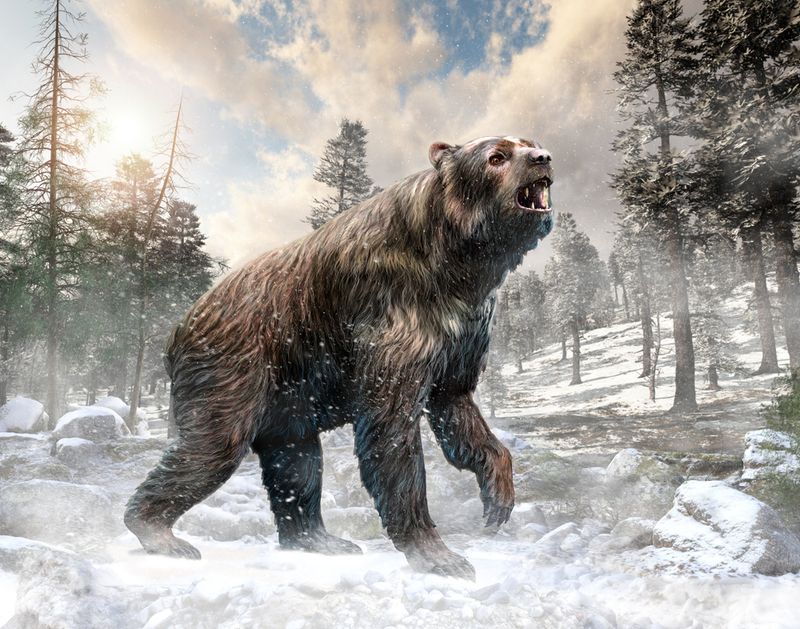
Despite its enormous size, the Giant Short-Faced Bear was built for speed. With long legs and a lean body, it could reach speeds of up to 40 miles per hour. This speed was crucial for chasing down prey and evading dangers.
Its agility allowed it to maneuver through diverse terrains, from dense forests to open plains. Imagine witnessing such a massive creature dashing with the grace of a smaller animal.
This unique combination of size and speed made it a truly exceptional predator, capable of surprising both prey and rivals.
A Short Face with a Purpose

The name “Short-Faced Bear” comes from its distinct facial structure. Unlike modern bears, it had a shorter snout, which enhanced its bite strength. This adaptation was perfect for crunching through bones and tough hides.
Its powerful jaws allowed it to consume a wide variety of prey, from small mammals to larger carcasses. This versatility in diet contributed to its success as a predator.
The bear’s unique appearance not only made it an efficient hunter but also contributed to its fearsome reputation in the animal kingdom.
Masters of the Ice Age
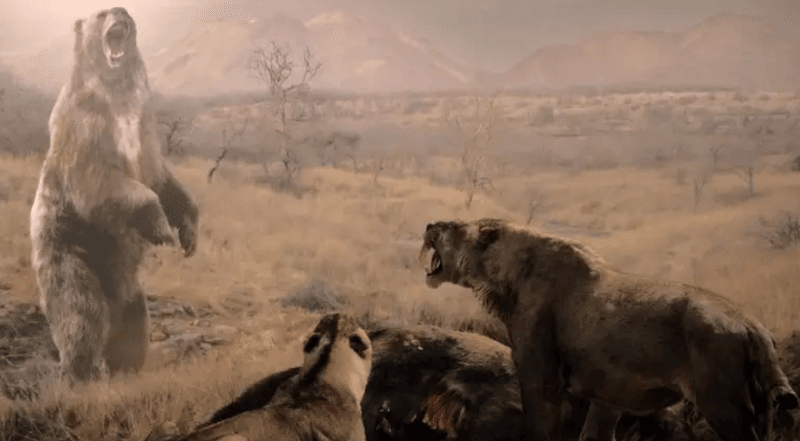
Living during the Pleistocene epoch, the Giant Short-Faced Bear was well-adapted to the cold climates of the Ice Age. Its thick fur and large body helped conserve heat, allowing it to thrive in frigid environments.
The bear’s ability to adapt to such harsh conditions speaks volumes about its resilience. It roamed vast territories in search of food, utilizing its keen sense of smell to locate prey beneath snow.
As the ice receded, this adaptability became crucial for survival in changing landscapes across North America.
A Legacy of Fossils
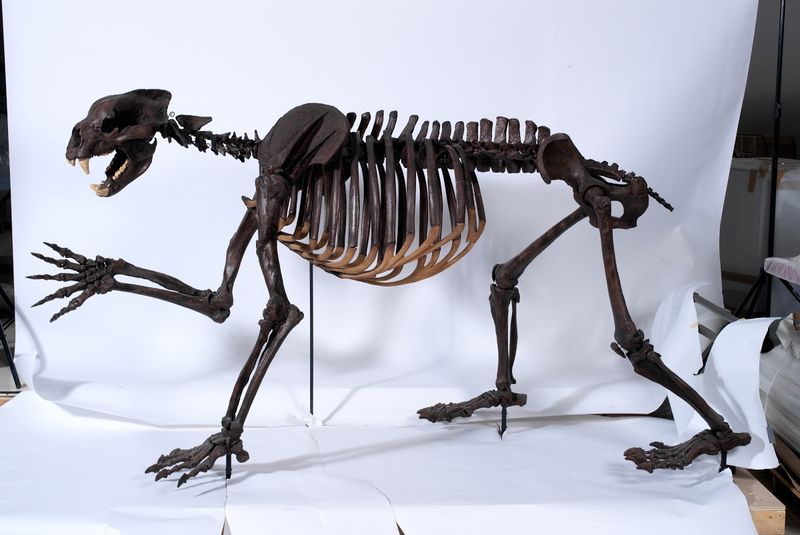
Fossilized remains of the Giant Short-Faced Bear have provided scientists with a wealth of information about this extinct species. These fossils, found across North America, showcase its impressive size and build.
Detailed studies of the bones reveal insights into its diet, behavior, and movement. Each fossil tells a story of survival and adaptation in a prehistoric world.
The presence of these fossils in various locations suggests a wide-ranging habitat, illustrating the bear’s dominance over diverse ecosystems.
The Mystery of Extinction
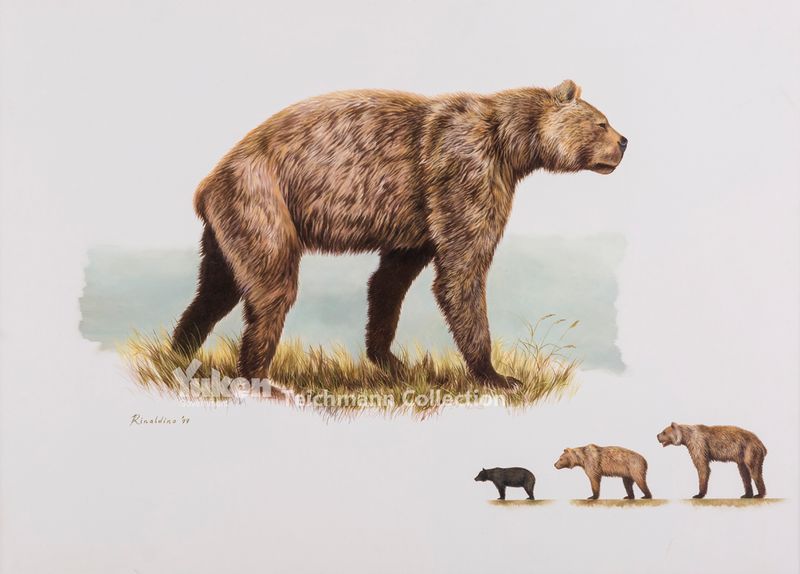
The reasons behind the extinction of the Giant Short-Faced Bear remain a topic of debate among scientists. Changes in climate and vegetation, combined with competition from humans and other predators, likely contributed to its decline.
As the Ice Age ended, the bear faced dwindling resources and increased competition for food. The arrival of human hunters further strained its survival chances.
Though extinct, the mystery of its disappearance continues to intrigue researchers, prompting new studies and theories.
Imposing Roar and Communication

Imagine the terrifying sound of the Giant Short-Faced Bear’s roar echoing through the prehistoric forests. This powerful roar served as both a warning and a means of communication among bears.
Its vocalizations could convey emotions, establish territory, or attract mates. The ability to communicate effectively was vital for maintaining social structures and survival.
Through these roaring exchanges, the bear cemented its reputation as an intimidating presence, leaving a lasting impression on any creature that heard it.
Diet: Opportunistic Feeder
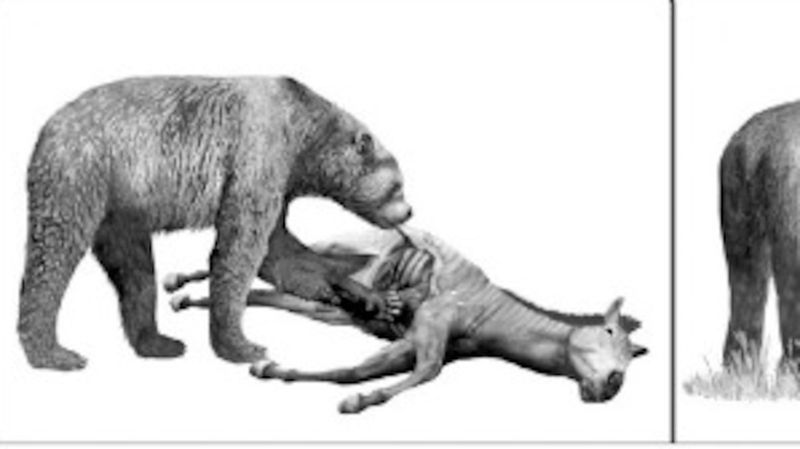
The Giant Short-Faced Bear was not a picky eater. Its diet was diverse, ranging from fresh kills to scavenged carcasses. This opportunistic feeding strategy enabled it to survive in various environments.
With a keen sense of smell, it could detect food from miles away, allowing it to locate meals with ease. This adaptability in diet was crucial during times when prey was scarce.
Such versatility ensured that whether hunting or scavenging, the bear could sustain itself and thrive in a competitive world.
A Bear of Many Names
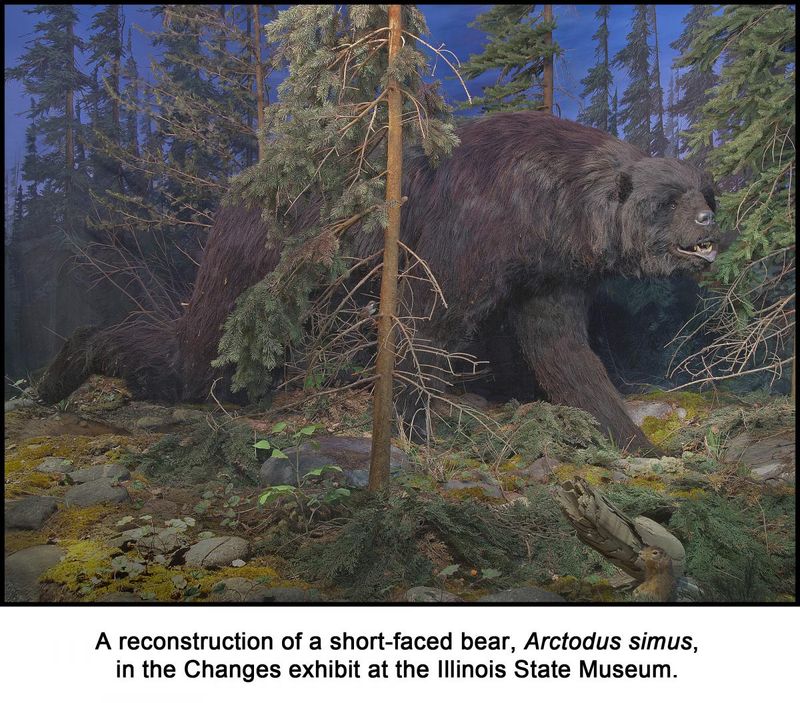
Throughout history, the Giant Short-Faced Bear has been known by many names. Scientifically, it is referred to as Arctodus simus. In native folklore, it was often depicted as a powerful spirit animal.
The diversity of names reflects the bear’s impact and significance across cultures and communities. Its legendary status is a testament to its awe-inspiring presence and the fear it instilled.
By exploring these different interpretations, we gain a richer understanding of how this magnificent creature was perceived by those who encountered it.
Solitary Yet Social
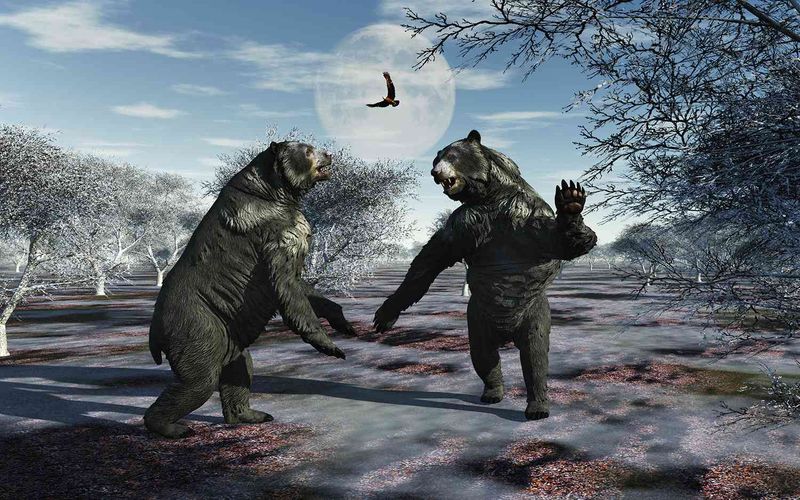
While primarily solitary, the Giant Short-Faced Bear displayed moments of social interaction, especially during mating seasons or when resources were abundant. These brief social encounters were crucial for reproduction and gene flow.
Its solitary nature meant that it covered vast territories in search of food and mates. Yet, when bears did meet, their interactions were complex and fascinating.
Understanding these social behaviors provides insight into the balance of independence and community in the animal’s life.
A Journey Through Time
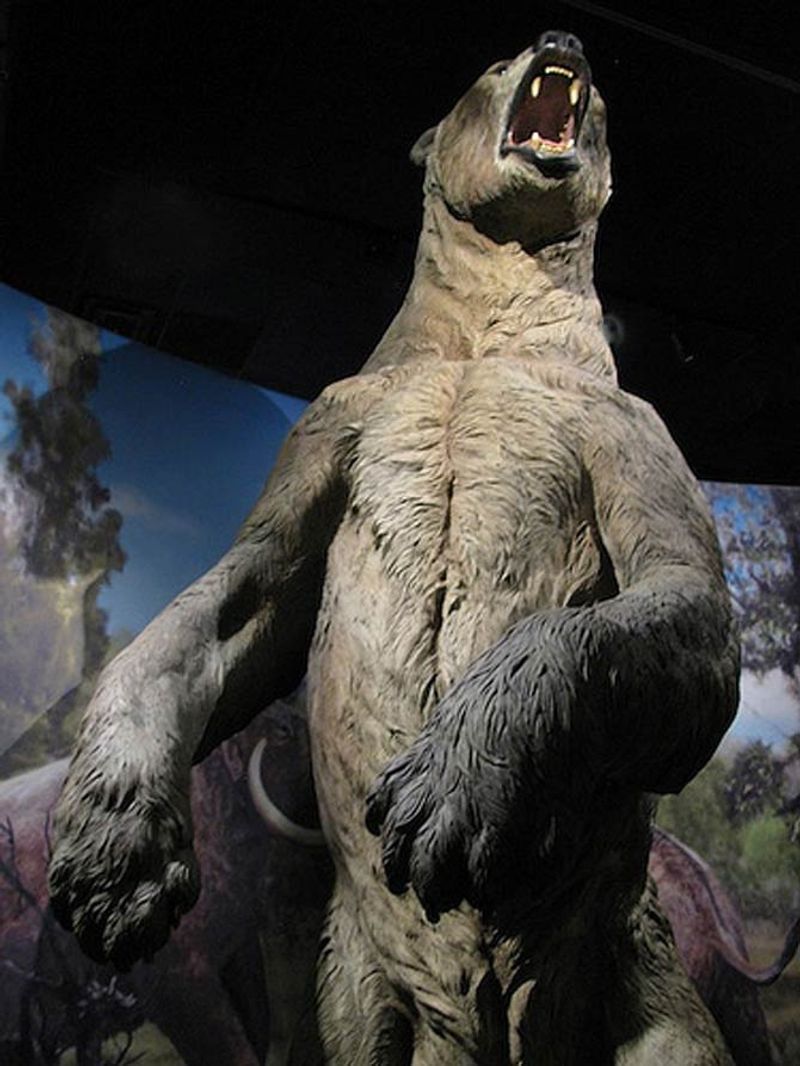
The evolutionary journey of the Giant Short-Faced Bear spans millions of years. Emerging during the Pleistocene, it adapted to the changing climates and landscapes of North America.
This journey was marked by evolutionary milestones that shaped its physical and behavioral traits. As environments evolved, so did the bear, reflecting the dynamic nature of life itself.
Studying this timeline offers a fascinating glimpse into the adaptability and resilience of one of history’s most imposing predators.
A Symbol of Strength
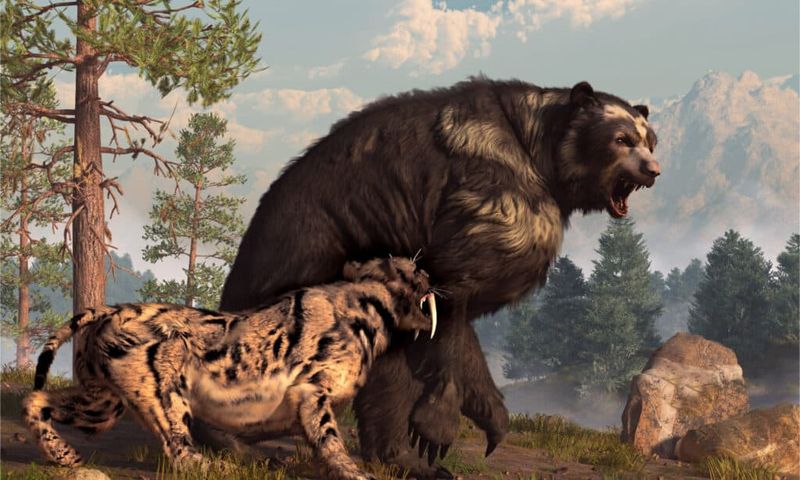
The Giant Short-Faced Bear symbolizes strength and resilience, qualities that resonate even today. Its impressive size and capabilities make it a timeless emblem of nature’s raw power.
Many cultures revered the bear as a symbol of courage and tenacity, often incorporating it into myths and stories. Its legacy continues to inspire those who admire the wild and untamed.
By looking to this majestic creature, we find inspiration in the enduring spirit of survival against all odds.

